Have you ever marveled at the remarkable tone variations a guitarist can create with just one instrument? Well, it all comes down to a seemingly insignificant component within the guitar – the 3-way switch. As an engineer turned luthier, my expertise stems from years of unraveling the intricacies of stringed instruments, among which includes the humble 3-way switch guitar. Drawing from in-depth scientific principles and practical experience, I’ve cultivated a deep understanding of its role, and its power in transforming your guitar’s tone. Unveiling the nitty-gritty of this critical switch, I invite you on a journey through the mechanisms, functions, and wiring techniques of this musical marvel. Get ready to tap into secrets reserved for professional luthiers thus far and enhance your guitar-playing experience like never before.
What a 3-Way Switch Is & How It Works
Function of a 3-Way Switch
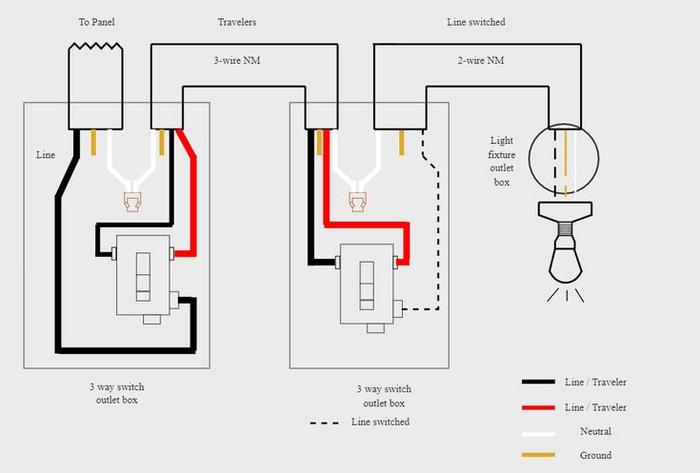
Building on our exploration of what a 3-way switch is, let’s delve into its function in guitar electronics. As an editor of numerous research and books on stringed instruments, I’ve gained a firm grasp of this concept’s significance. The 3-way switch essentially controls the guitar’s tone by directing the electrical signal path through different pickup selections, referred to as pickup switching. This flexibility allows for versatile sound possibilities.
By moving the switch to its three positions, the guitar player can choose different pickup combinations, significantly altering the instrument’s sound. The ‘up’ position usually activates the neck pickup, providing a warmer, fuller sound. The ‘middle’ position generally engages both the neck and bridge pickups, offering a balanced tone. Lastly, the ‘down’ position typically switches to the bridge pickup, producing a brighter and sharper sound. These adjustments are essential in shaping the tone of the guitar, enhancing the richness of its sonic versatility.
Understanding the function of a 3-way switch serves as a key component in mastering guitar electronics, and it sets the foundation for comprehending its mechanics, which we’ll discuss next. Remember, knowledge of this switch and robust pickup switching skills can significantly enhance your ability to dial in the perfect tone for any playing situation. Embrace the freedom and control it avails.
Mechanics of 3-Way Switches
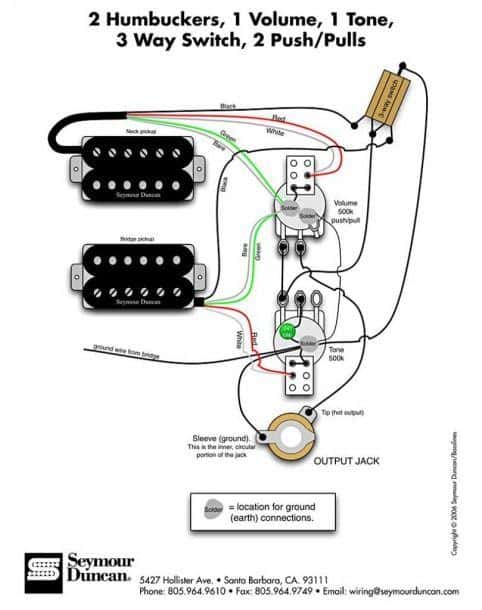
Having discovered the fascinating world of acoustics and guitar ergonomics early in life, I, myself, have spent countless hours studying the inherent mechanisms of the 3-way switches in our beloved stringed companions. The intricate mechanisms of these 3-way switches contribute significantly in shaping the commanding soundscapes of our guitars.
It hit me clearly just how deep my admiration for the intricacies within a 3-way switch runs as I found myself pouring over diagrams late into the night, mentally running through countless ways it could enhance pickup selection, improve a coil tap, or manage the power of series parallel configurations.
As it turns out, the mechanics involved in a 3-way switch are intricate and influence the guitar’s outcome in several ways. It allows the player to experience fine nuances in tone that may otherwise go unnoticed.
Through years of hands-on experience, reading, and experimenting, I’ve come to comprehend the irrefutable link between switch mechanics and the overall guitar functionality. A 3-way switch’s mechanics have a direct impact on the guitar’s auditory brawn and soul, turning it from a mere instrument into an extension of the musician’s inner self.
To lead the upcoming segment on the practical uses of 3-way switches within everyday settings, allow us to dissect the function and the relevance of these mechanical marvels further. As we journey through the specifics of 3-way switches, let the fascination for these tiny devices guide our understanding, just as it has for me throughout my musical journey.
Why You Would Use a 3-Way Switch
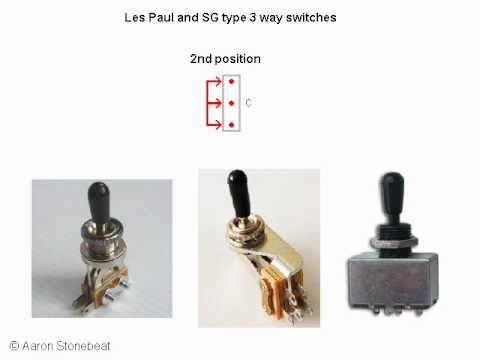
As I delved deeper into my work with the American Lutherie journal and the Savart Journal, I started exploring various guitar mods and customizations. In this journey, I discovered the versatility and advantages a 3-way switch brings to the world of guitar modifications. When designing your guitar setup, tone, and sound are everything. Not only does it define your signature sound, but it also brings a custom feel that’s unique to your guitar. This led me to experiment with and appreciate the essential role of a 3-way switch in a guitar’s electrical system.
Could a 3-way switch be the key to unlocking the sound you’ve been striving for in your guitar? Have I piqued your interest? Excellent! Because in the remainder of this chapter, I’ll detail why you would want to use a 3-way switch for your guitar customizations.
First and foremost, a 3-way switch allows you to explore and play with the guitar’s tonal range extensively. By switching between configurations, you can discover the subtle tonal differences and nuances that make your music unique. It’s like having multiple guitars at your fingertips, each one offering a different sonic character.
Moreover, I’ve found a 3-way switch provides a high degree of flexibility for live performances and studio recordings. Switching between the pickup coils lets you adapt to the varying acoustic environments quickly and effortlessly.
Another major benefit of using a 3-way switch in guitar mods is the improved reliability. Unlike other switches, the 3-way switch is uncomplicated, robust, and reliable. Its simple mechanical structure ensures a lower failure rate, making it a trusty companion for the long haul.
To conclude, the benefits of using a 3-way switch are numerous. From versatility in tone to reliability, these switches offer a sense of freedom and customization that is almost indispensable in my guitar setup. In the subsequent sections, we will dive deeper into the different 3-way switches, their specific uses, and how to wire one yourself.
When and Where to Use Specific 3-Way Switches
Guitar Models and Their Switch Types

As a member of the New England Luthiers group, I’ve gathered extensive experience with different guitar models and their unique 3-way switch types. One key insight is that the location of the switch has a crucial role in its utilization. In guitar models like the Les Paul, the switch is located at the top corner of the body, allowing the player to effortlessly engage it without hampering playing techniques or interrupting the flow of music. The Les Paul switch, specifically, offers simultaneous control of rhythm and lead circuits through its 3-way configuration.
On the other hand, the Oak Grigsby switch, often found on Strat-style guitars, is lodged between the volume and tone knobs. This positioning allows for easy accessibility, letting the player swiftly alternate between the three pickup combinations. However, an unintended hit might cause a sudden, undesirable change in tone. Thus, switch types cater to unique needs and preferences, with every model offering different contributions to the overall sound and performance. A keen understanding of these can significantly augment your ability to effectively adapt and utilize your guitar’s potential.
Remember, the relevance of specific 3-way switch types is tied inherently to where it is on your guitar and how you, as an individual player, engage it. This will vary for every guitarist, giving birth to a diverse range of tones and performance styles.
Timing & Situational Use of Different Switch Types
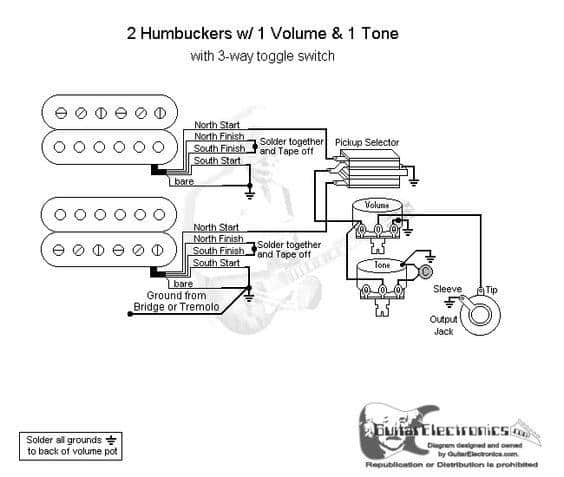
Building on our discussion of where to use specific 3-way switches, let’s delve into the timing and situation of using different switch types—a vital part of guitar repair and an exciting part of guitar DIY. Throughout my journey into lutherie, I’ve come to understand the crucial role of timing in the effective use of 3-way switches.
Consider the type and model of your guitar, the sound you aim for, and the situation you’re in. If you’re onstage and need to quickly transition between tones, a rotary switch—due to its easy accessibility—might serve you best. On the other hand, if you’re experimenting with unique sound combinations at home, a toggle switch could provide the versatility you’re looking for.
Timing and situational use basically boils down to when and where you are playing your guitar, and what sound you need at that particular moment. Making a strategic choice about the right switch type for your musical scenario can unlock new avenues of sound and boost your overall performance. As you venture into the realm of guitar DIY, knowing when to use specific switches gives you greater control over your instrument.
Let’s continue by looking at guitar models and their switch types, to provide context on how these switches are typically used.
How to Wire a 3-Way Switch
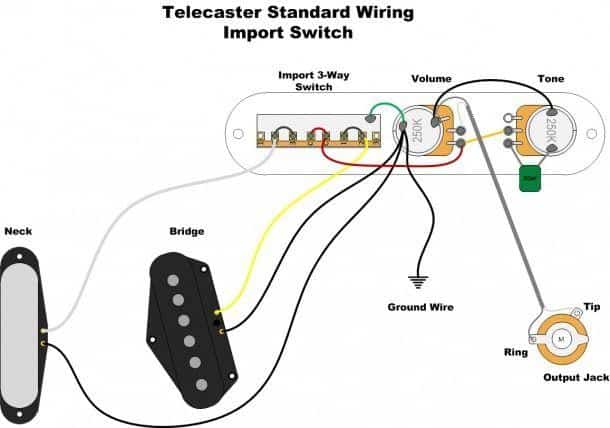
As we transition into the technical nuances of how to wire a 3-way switch, I’m reminded of the first time I peered into the cavernous internals of my own beloved guitar. With my background in engineering and experience in DIY guitar modifications, the labyrinth of wires, circuits, and switches initially intimidated me. But, through trial and error, I found the sweet symphony of success. And now, I’ll guide you hand in hand through the wiring process.
When it comes to 3-way switch wiring, it’s best to start simple. You need to conceptualize the wiring diagrams as visual representations of the electrical connections. Imagine each line and curve as a real-life wire, each node a connection point. Whether you’re installing a guitar switch for the first time or conducting routine maintenance, understanding the connection topology will empower you to confidently manipulate the wirings like an experienced luthier.
Thought you needed years of engineering experience to wire a guitar switch? Think again. You’re about to learn how.
Now, if you’re imagining a knot of wires, stop yourself right there. It’s not as complex as it initially seems. Visualize this: three distinct connections emanating from a single switch. One for the bridge pickup, one for the neck pickup, and one for the common. You’re essentially enabling an on/off control, directing the electric signal as per your whims.
Once you’ve grasped the concept of this 3-way diverting principle, it’s time to power up your soldering iron. It’s critical to ensure a strong and clean solder joint. Your 3-way switch will be your trusty companion through countless notes and strums, after all. And it deserves nothing less than the utmost attention to detail.
This hands-on process is more than just an engineering exercise for me; it’s something of a meditation. As I feel the warmth of the soldering iron and the smell of melting tin alloy, I’m transported to a contemplative space where every connection is a commitment, every adjustment a step towards harmony.
Join me in this journey, and let’s begin by focusing on the switch wiring diagram. As you navigate the intricate layout, take note of each connection and the path it provides between the various components. You’ll find that understanding the underlying routes of the electrical current is key to installing and manipulating your 3-way switch successfully.
This guide ultimately serves to embolden you to take the leap of faith – to delve into the thicket of wires and circuits without fear. And, with a few stumbles and false starts, you’ll be playing your custom-wired guitar to its full potential in no time.
Remember, it’s not just about understanding how mechanics of the 3-way switch works but about feeling the rhythm of your own creativity. So have patience, soak in understanding, and infuse your wirings with your unique musical soul. Let’s immerse ourselves in the next section, where we discuss the best recommendations for purchasing guitar switches and dive into my own experiences with the different brands and models.
Where to Purchase and Recommendations
Shopping for Guitar Switches
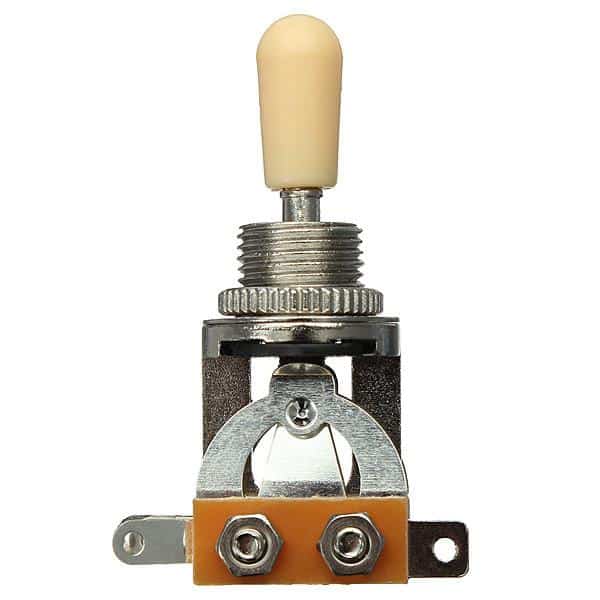
Having spent years experimenting with electric guitar parts, I’ve mastered the art of sourcing quality components. The hunt for superior 3-way switches is an integral part of any musician’s journey. Trusted retailers and specialist music stores, both online and physical, should be your starting poing when shopping for guitar switches. Remember, quality always trumps the bargain prices. A poor-quality switch will impact your guitar’s performance, and in the long run, cost you more with frequent replacements.
You should also check out manufacturers’ websites for brand-specific components. Read up on reviews, keeping an eye out for compatibility with your guitar model, durability, and performance. Learning the nerve center of your guitar is an empowering experience, enhancing your understanding when discussing your needs with a seller. Finally, don’t forget to look for advice and recommendations within guitar forums and communities. People’s experiences may save you much trial and error, and you’ll find many members are more than willing to share their knowledge about electric guitar parts.
Remember that the right 3-way switch will enhance your guitar’s flexibility, allowing you to choose specific pickup configurations for diverse sounds. The reward of finding the perfect part is well worth the initial effort in search.
Recommended 3-Way Switches
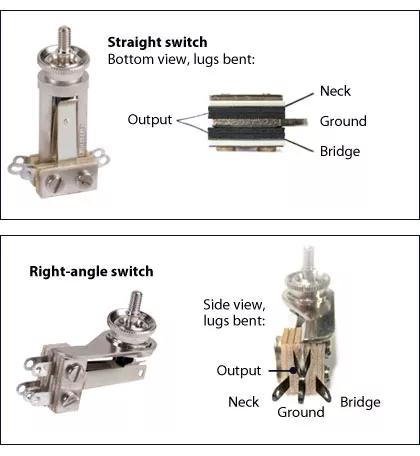
Delving into my treasure trove of experience with guitar hardware, I have identified three premium 3-way switches that are noteworthy for their stellar quality and durability. First, the Seymour Duncan Toggle Switch stands out for its reliable performance. Second, the Switchcraft Short Straight Toggle is loved by professionals for its robust build. Finally, the Fender Oak Grigsby stands robust, earning acclaims for its impeccable operation.
These switches are not just chosen for their superior endurance but also due to their simplicity of operation and wiring, ensuring smooth transitions while playing. Remember, the right 3-way switch can significantly enhance your guitar’s sound versatility.
Quality indeed ties with cost, but I assure you these recommendations weigh their prices with their durability and operational ease, worth investing in. These 3-way switches could be purchased from any reliable music or guitar hardware stores, or on online portals. Make sure to cross-verify the specifications as per your requirement before the purchase.
Perceived from my experiences and expectations, this list can serve you as a reference point in shopping for reliable, durable, functional 3-way switches. Investing right in your guitar’s hardware can bring out the music that truly resonates with your soul.
FAQs
What is a 3-way switch on a guitar?
How does a 3-way switch work?
How do you wire a 3-way guitar switch?
Conclusion
So, my friends in guitar DIY, we’ve journeyed through the depths of understanding the versatile 3-way switch guitar. We’ve demystified its functions and mechanisms, examined its situational use, and discussed various models with their respective switch types.
From the intricacies of its design to the magic it can bring to your guitar sounds, we’ve dissected every facet. I bring years of hands-on experience, scientific study and a passion for guitar music to the table. Together, we’ve thoroughly explored the world of 3-way guitar switches, and highlighted the importance of the correct timing and situational use of different switch types.
Remember, a well-chosen 3-way switch can significantly elevate your sound, and the act of wiring one can be your entry point into the exciting world of guitar DIY. But are you ready to master the 3-way guitar switch?
Don’t forget, the beauty of these switches isn’t just in their function – it’s also about when and where to use specific 3-way switches to create the sonic palette you desire. So, keep experimenting, keep learning, and above all, keep strumming, my friends.
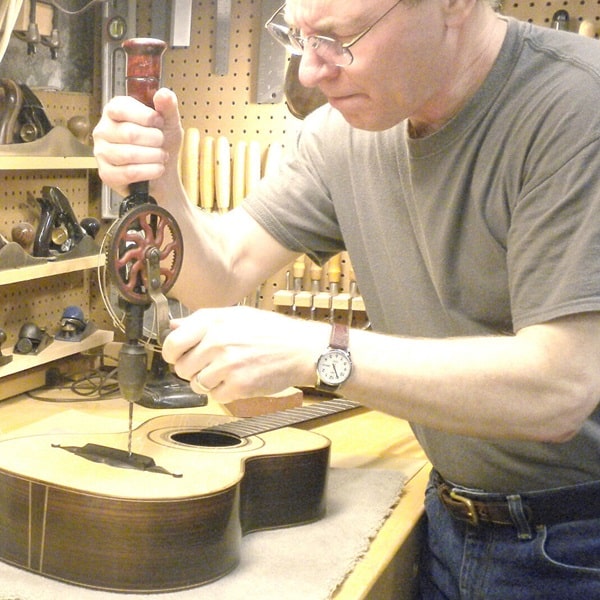
R.M. Mottola, an engineer-turned-luthier, revolutionizes stringed instrument design with his deep focus on acoustics and ergonomics since 1994. As editor of the Savart Journal and a key contributor to American Lutherie, Mottola merges science with artistry in lutherie. He enriches the field with his extensive knowledge, shared through his Liutaio Mottola website, making him a beacon in the world of modern instrument craftsmanship.
